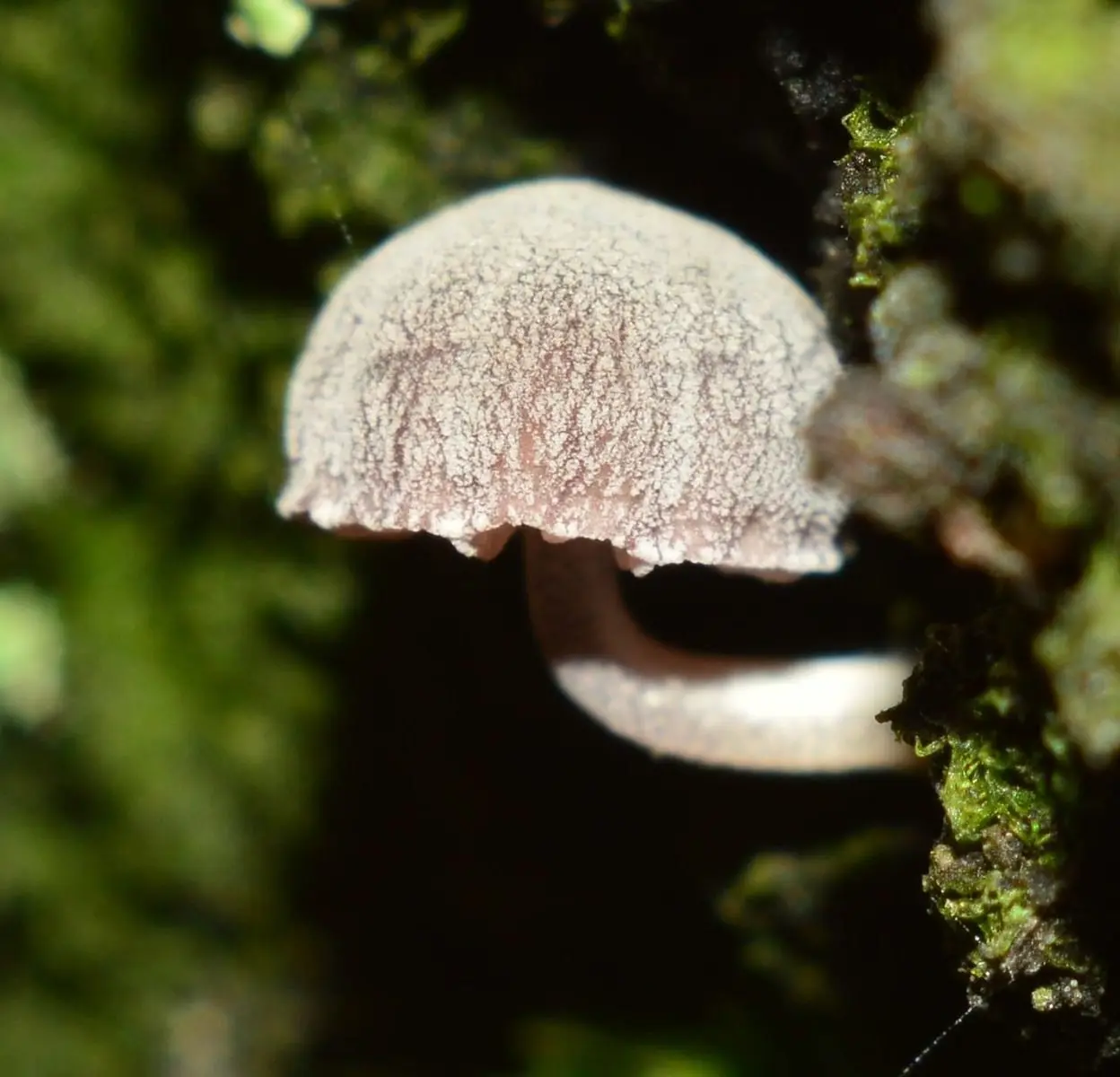Mycena meliaceae (Mycena meliigena)
- Division: Basidiomycota (Basidiomycetes)
- Subdivision: Agaricomycotina (Agaricomycetes)
- Class: Agaricomycetes (Agaricomycetes)
- Subclass: Agaricomycetidae (Agaricomycetes)
- Order: Agaricales (Agaric or Lamellar)
- Family: Mycenaceae (Mycenaceae)
- Genus: Mycena
- Type: Mycena meliigena (Melium mycena)
:
- Agaricus meliigena
- Prunulus meliigena

head: 5-8, possibly up to 10 millimeters across. The shape is parabolic to convex, the upper part of the cap is often slightly flattened in the center or even slightly depressed. Pronounced furrowed, translucent-striped. Covered with a whitish coating, gives the impression of frost. Color reddish, brownish pink, reddish purple, dark purple, pale brown with a lilac tinge, more brown in age.
plates: adnate with a tooth, adnate or slightly decurrent, rare (6-14 pieces, only those that reach the stem are counted), wide, with a convex narrower finely serrated edge. The plates are short, not much reaching the legs, rounded. In young mushrooms, pale, whitish, whitish, then “sepia” colors (light brown paint from the ink bag of a sea mollusk, sepia), pale brown, gray-brown, beige-brown, dirty beige, the edge is always paler.
Leg: thin and long, from 4 to 20 millimeters long and 0,2-1 mm thick, curved or, more rarely, even. Fragile, unstable. One color with a hat. It is covered with the same frost-like coating as the hat, sometimes larger, flaky. With age, the plaque disappears, the leg becomes bare, shiny, at the base a thin long white fibrous pubescence remains.

Pulp: very thin, translucent, whitish, whitish-beige, watery.
Taste: unknown.
Smell: indistinguishable.
spore powder: white.
Bazidi: 30-36 x 10,5-13,5 µm, two- and four-spore.
Споры: smooth, amyloid, from spherical to almost spherical; from 4-spore basidia 8-11 x 8-9.5 µm, from 2-spore basidia up to 14.5 µm.
No data. The mushroom has no nutritional value.
It grows, as a rule, on the moss-covered bark of various living deciduous trees. Prefers oaks.
The fruiting period falls on the second half of summer and until late autumn. Melia mycena is quite widespread in the forests of Europe and Asia, but is considered a rare species, listed in the Red Books of many countries.

During humid and not very cold autumn weather, Mycena meliaceae suddenly appears in large numbers from the bark, often among lichens and mosses, and not directly from the tree. Each oak base can have hundreds of them. However, this is a very short-lived, ephemeral beauty. As soon as the high humidity disappears, Mycena meliigena also disappears.
Mycena corticola (Mycena corticola) – according to some sources it is considered a synonym for Mycena meliigena, according to some they are different species, Melian – European, Cork – North American.
Mycena pseudocorticola (Mycena pseudocorticola) grows in the same conditions, these two mycenae can often be found together on the same trunk. M. pseudocorticola is considered the more common species. Young, fresh specimens of the two species are not difficult to distinguish, Mycena pseudocrust has bluish, gray-bluish tones, but both become more brownish with age and are difficult to identify macroscopically. Microscopically, they are also very similar.
Brown colors in older specimens may cause confusion with M. supina (Fr.) P. Kumm.
M. juniperina (juniper? juniper?) has a pale yellowish-brown cap and grows on the common juniper (Juniperus communis).
Photo: Tatiana, Andrey.









